Guide to the exhibition “Art Hunters” at the Museum of Russian Impressionism
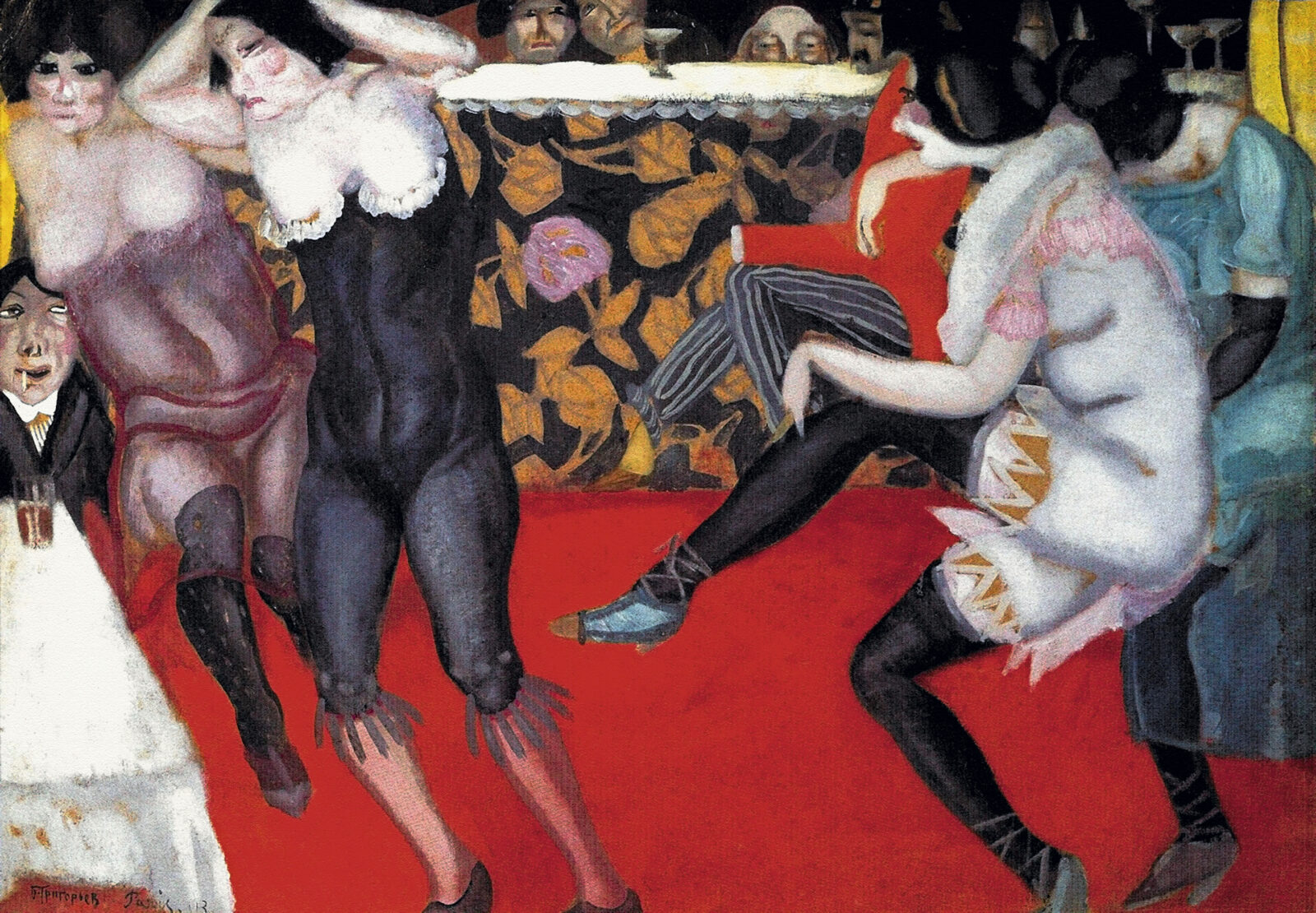
The Museum of Russian Impressionism presents the exhibition “Art Hunters”, dedicated to collectors of Russian art of the 21th century during the years of thaw and stagnation. From April 29 to August 2021, 70, the exhibition will feature more than XNUMX works of Russian and Soviet modernism by artists of the first third of the XNUMXth century - from Konstantin Korovin and Alexander Benois to Kazimir Malevich and Niko Pirosmani. The exhibition partner will be the St. Petersburg gallery KGallery, which provided some of the paintings for the exhibition. The museum will tell the stories of fourteen collectors from Moscow and Leningrad and their finds, many of which are still rarely shown to the general public.
What paintings will be presented at the exhibition? What should you know before visiting the exhibition? TheStatusSymbol.com publishes a guide to the “Art Hunters” exhibition at the Museum of Russian Impressionism.
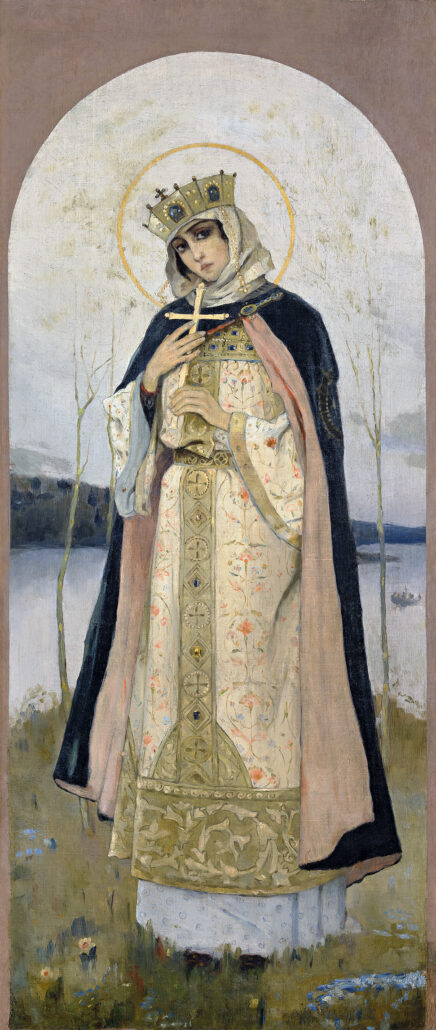
Mikhail Vasilievich Nesterov (1862–1942) was one of the most outstanding masters of Russian and Soviet art: Pavel Tretyakov, a recent graduate of the Moscow School of Painting and Painting, already bought the first paintings for his collection, and the artist’s creative heritage totals several thousand works. Nesterov, who did not break with the pictorial tradition, manages to create his own original variations of classical genres: portraits, landscapes and religious paintings. “Nesterov’s landscape” and “Nesterov’s girl” become vivid and recognizable subjects and images of the artist’s work. “Saint Olga” from the collection of Alexei Stychkin is the author’s repetition of the image created for the decoration of the southern (right) aisle in the choir of the Vladimir Cathedral in Kyiv. Art historian, archaeologist and art critic Adrian Prakhov, who supervised the interior decoration of the cathedral, invited Nesterov to participate in the creation of a cycle of paintings; the group of artists was headed by Viktor Vasnetsov. Nesterov was so captivated by the work on the frescoes of the Vladimir Cathedral that the artist went on a three-month journey to study Byzantine monumental art (visiting Constantinople, Athens, Rome, Florence, Ravenna). Nesterov creates religious frescoes for Orthodox churches in Georgian Abastuman (Church of Alexander Nevsky), and in Ukrainian Sumy (Savior Transfiguration Cathedral), and, of course, in Russian capitals: murals in the Moscow Marfo-Mariinsky monastery and sketches for the St. Petersburg Cathedral of the Resurrection of Christ on Blood. Nesterov’s works, including sketches for mosaics and paintings, were popular with collectors: for example, Princess Maria Tenisheva acquired for her collection seven watercolor sketches for the mosaics of the facade and iconostasis of the Church of the Savior on Spilled Blood.

Dmitry Semyonovich Stelletsky (1875–1947), who studied at the sculpture and architectural departments of the Academy of Arts in St. Petersburg, traveled a lot (sometimes together with Boris Kustodiev) around Russia in search of ancient Russian monuments, frescoes and icons. After studying at the Julian Academy in Paris in 1904, Stelletsky lives and works in the Talashkino workshop of Maria Tenisheva on full board, then goes to St. Petersburg, becomes a member of the Union of Russian Artists and the World of Art association. In the national-romantic spirit of Art Nouveau, Stelletsky managed to offer an original version of the work with Russian folk and Orthodox imagery: these are his illustrations for “The Tale of Igor’s Campaign”, the parsun portrait of Count Mikhail Olsufiev, the carved wood “Noble Boyarin (Martha the Posadnitsa)”, decorations for the Alexandrinsky and Mariinsky theaters, Diaghilev’s “Russian Seasons” and painting of the Parisian Trinity-Sergius courtyard. In “Dawn,” Stelletsky combines iconographic traditions—geometric clothing patterns, personal writing, reverse perspective of architectural forms—with symbolic content. This work preceded the large-scale tetraptych of 1912, “The Four Times of Day (Seasons of Day)”—his first composition, “Morning (Flowers),” reproduces the image found in “Dawn.” These panels from the estate of Count Yu. A. Olsufiev were transferred to the Tula Museum, the architectural project of which in the neo-Russian style was prepared by Stelletsky in 1908.
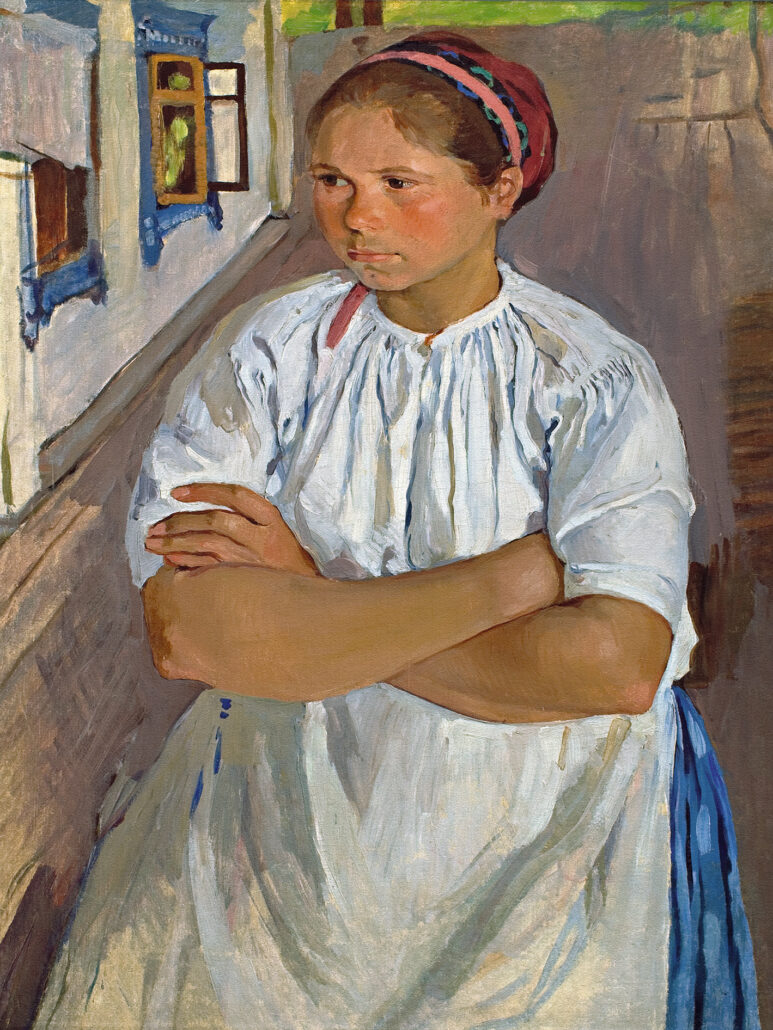
Your best things Zinaida Evgenievna Serebryakova (1984–1967) wrote on the Neskuchnoye estate, which belonged to the Benois-Lanceret families, on the border of the Kursk and Kharkov provinces. Serebryakova’s portraits of peasants form the series “Types of Kursk Province,” published in postcards by the Community of St. Eugenia. Serebryakova was in close contact with many of the rural girls; they became models not only for genre scenes, such as the famous “Whitening of the Canvas,” but also for “Bath” and a rondo with allegories of the countries of the East for the Kazan Station. Heir to neoclassical traditions, niece of Alexandre Benois and daughter of Evgeniy Lanceray, Serebryakova admired the romantic painters Alexei Venetsianov and Vasily Tropinin. In “Portrait of a Nanny,” the artist chooses a perspective from below, achieving a monumental figure. At the same time, the portrait was painted with Vermeer-like warmth and care: the model’s stern gaze is emphasized by a spare color scheme of ocher, blue and white.
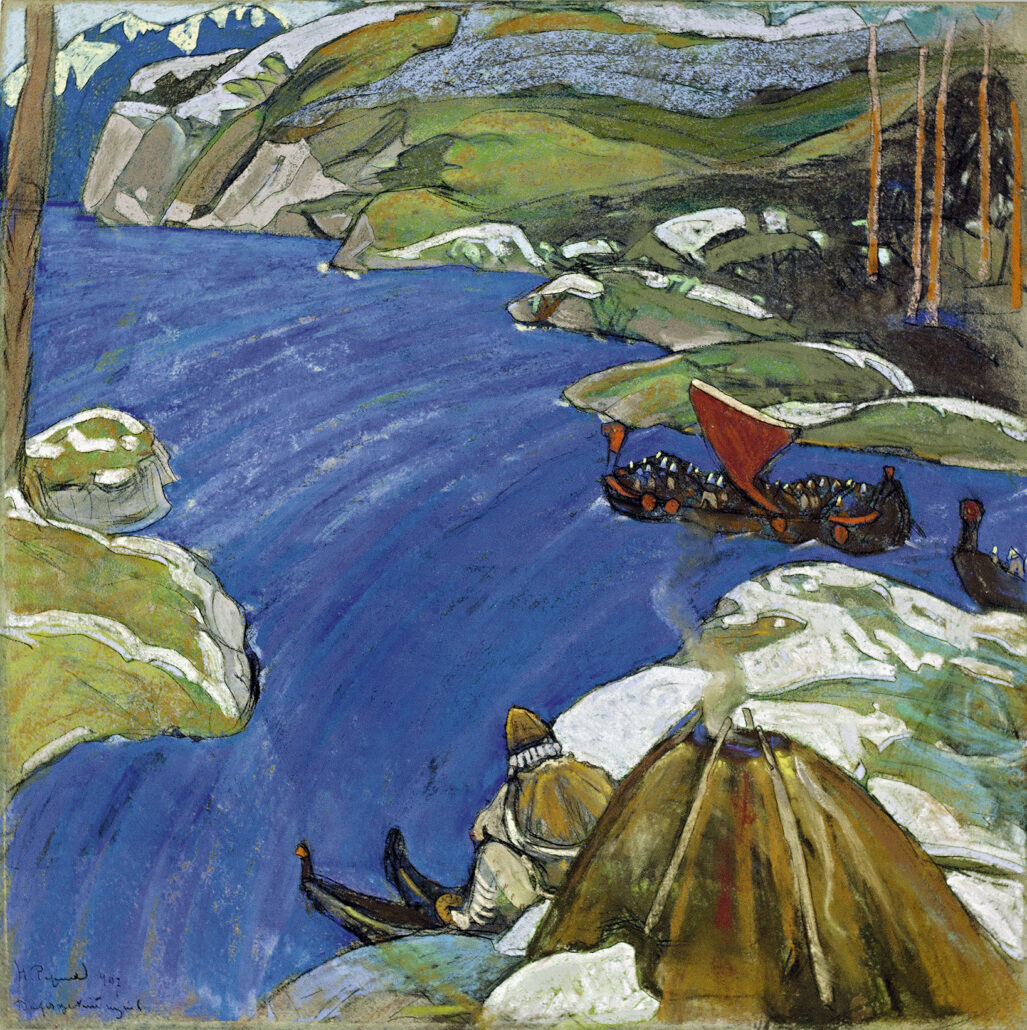
Nicholas Konstantinovich Roerich (1874–1947) - an artist whose life’s journey began in St. Petersburg and ended in the Western Himalayas. A world-famous scientist, philosopher, traveler and writer, Roerich was passionate about art, history and archeology since childhood. At the Academy of Arts, he studied in the class of Arkhip Kuindzhi, who largely influenced the student’s passion for the landscape genre, the use of bright, intense colors and decorative combinations. After graduating from the academy, Roerich continued his education in Paris, in the private studio of Fernand Cormon, who spoke of the Russian artist in the following way: “He feels the character of his country! He has a special point of view."
Roerich's “Varangian Way” (1907) was kept in the Leningrad collection of the historian and archaeographer Sigismund Valk. The history of Ancient Rus', and in particular the “path from the Varangians to the Greeks” - the main route of trade and cultural relations, was the main object of Nicholas Roerich’s fascination since childhood. Even his diploma work, the painting “Generation after generation has risen. Messenger" (purchased by Pavel Tretyakov from a student exhibition), he devoted not to ancient or biblical subjects, but to the ancient antiquity of the Slavic tribes. Significant assistance in research and collection of materials for Roerich was provided by the critic, head of the Art Department of the Public Library, Vladimir Stasov, who selected the rarest sources for the artist and advised on the forms of ancient ships and types of buildings. In search of inspiration, in 1899 Nicholas Roerich traveled along the Varangian Route from the Baltic Sea along rivers and lakes to the Black Sea, to the lands of the former Byzantine Empire. “In order for a historical picture to make an impression, it is necessary that it transports the viewer to a bygone era; For this purpose, the artist cannot invent and fantasize, hoping that the audience is unprepared, but in fact, he must study ancient life as soon as possible, imbue it with it, be saturated through and through,” Roerich noted in his lecture “Art and Archeology.”
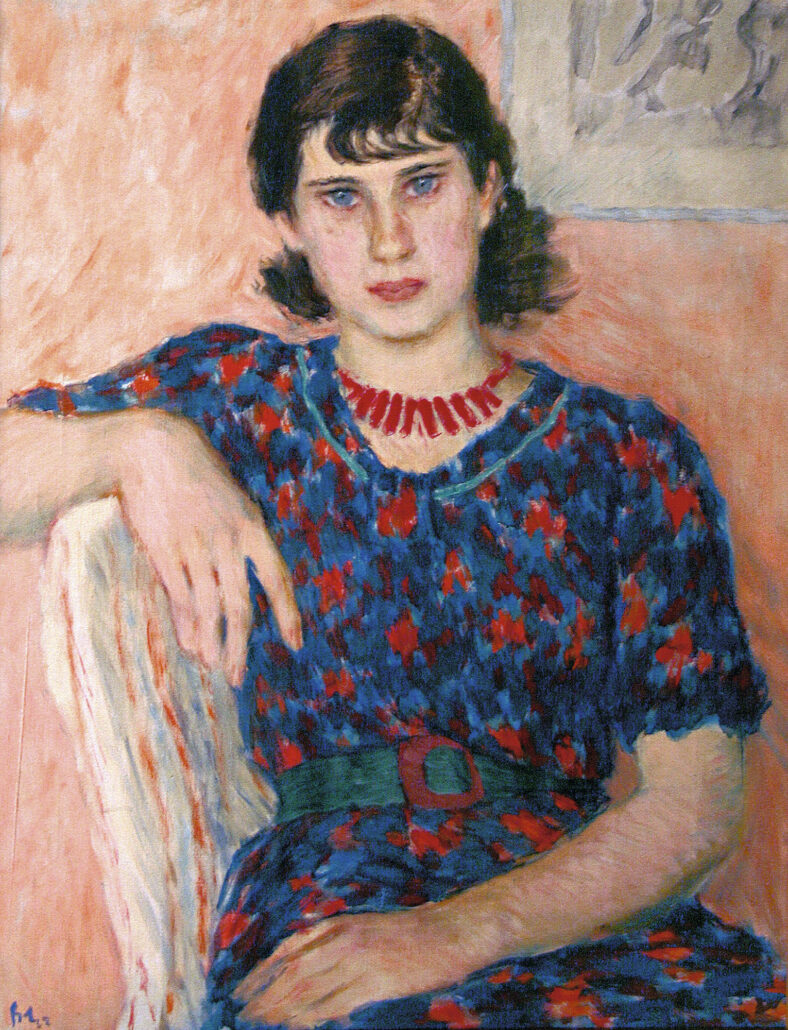
1912 turned out to be a year for the 21-year-old aspiring artist Vladimir Vasilievich Lebedev (1891–1967) significant: he entered the private workshop of Mikhail Davidovich Bernstein and the Higher Art School at the Imperial Academy of Arts. The main event was the opening of the exhibition “One Hundred Years of French Painting” in the halls of Princess Yusupova’s house on Liteiny Prospekt. 1812–1912”, organized by the magazine “Apollo” and the French Institute in St. Petersburg. The large-scale show included more than a thousand works by leading French masters, including 10 works by Edouard Manet, 17 by Paul Cézanne and 24 by Auguste Renoir. It is with the latter that Lebedeva shares an interest in picturesqueness built on exquisite tonal combinations. At the same time, as Nikolai Punin noted: “Lebedev, unlike many Russian artists who, falling under certain influences, begin to see and feel with someone else’s eyes and someone else’s heart, always remained himself; the vast experience of the French masters was not life experience for him, but only school experience, and he wisely used this experience not to develop his individuality, but to become a more perfect artist.” Vladimir Lebedev called his method “painterly realism”: not avoiding his passion for cubism, he adhered to a naturalistic worldview. Fascinated by female beauty, the artist sought to convey the charm of his models using impressionist techniques. Lebedevsky “Portrait of a girl with bangs”, part of an extensive gallery of female images of the 1920–1930s, in which “Soviet Venuses” began to appear - athletes, metro workers, conductors - is interesting for its exquisite coloristic harmony, fractional brush strokes, spectacular colored shadows and, of course, the desire to capture spontaneity poses and lively fleeting gaze of the young model.
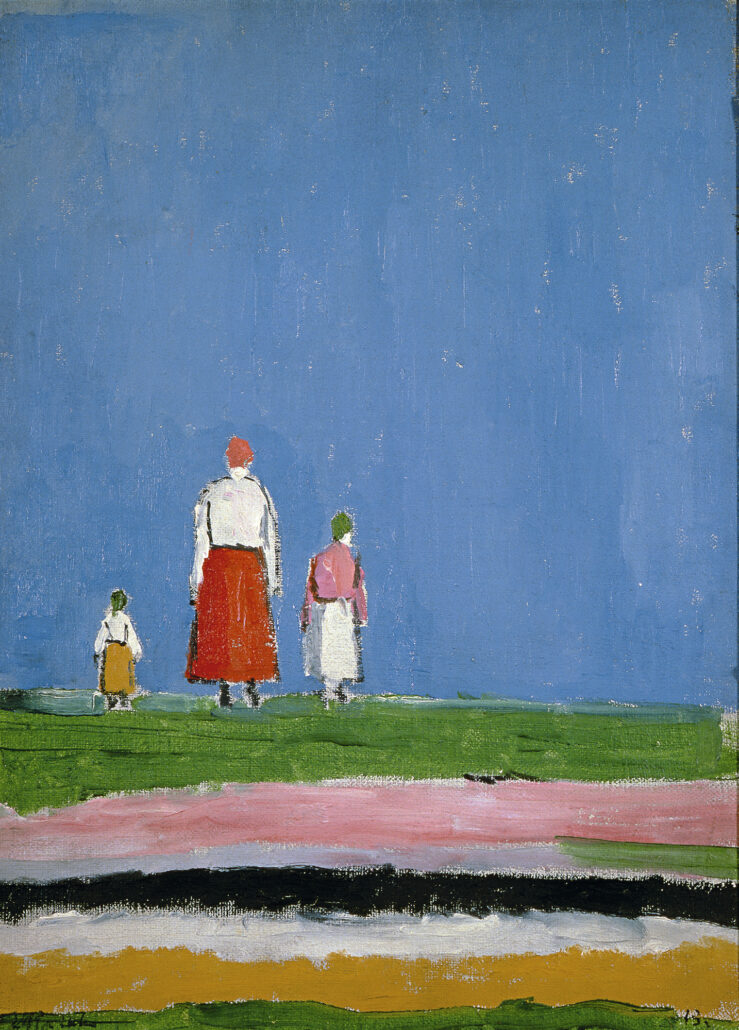
Creator of Suprematism Kazimir Severinovich Malevich (1879–1935) on the way to the “Black Square” I experimented a lot; His experiments in various styles and manners are known: from impressionism, fauvism and Cezanne to cubism and realism. Malevich is a great mystifier who, for his personal exhibition in 1929 at the Tretyakov Gallery, significantly updated and supplemented the chronology of his work. By indicating early dates on works from the late 1920s, Malevich “orchestrated” his own artistic evolution. In accordance with the theory he developed, the art of the XNUMXth century consisted of five successive stylistic movements: impressionism, Cézanneism, cubism, futurism and Suprematism as the highest and final stage. “Malevich <...> loved demonstrations, declarations, debates, new axioms; asserted and believed, hanging slogans over his paintings; He willingly participated in public speeches; by the age of fifteen he was already crashing into listeners with the boomerangs of his squares and preaching. <…> Malevich knew how to inspire unlimited faith in himself, his students idolized him like Napoleon’s army; on the cuffs they wore the sign of their leader: a black Suprematist square. <...> Logically overcoming impressionism, he instilled in himself the cubist serum of Braque-Picasso and, having discovered the principles of alogism, entered his cube-futurist period,” Nikolai Punin wrote about Malevich.
Malevich's work "Three Figures in a Field" from the collection of Valery Dudakov and Marina Kashuro is an excellent example of the post-Suprematist period of the late 1920s - early 1930s. The artist presented his own version of the peasant theme in a neo-primitivist vein. Depersonalized figures receding beyond the horizon are transformed into symbols of exterminated peasant life, natural and organic, which the artist so admired in his memoirs.

The artist who created the world's first abstract painting in 1910, Wassily Vasilievich Kandinsky (1866–1944), was a graduate of the Faculty of Law of Moscow University, a member of the Imperial Society of Lovers of Natural History, Anthropology and Ethnography and a participant in ethnographic expeditions. In the late 1890s and 1900s, Kandinsky studied painting with Aschbe and von Stuck in Germany, where, in the style of Jugendstil (the German version of Art Nouveau), he created a number of works on romantic subjects: “The Bride”, “Couple in Love”... In Munich, Kandinsky becomes one of the organizers of the leading avant-garde movement in Europe - the “Blue Rider”, whose members - Gabriela Munter, Franz Marc and Paul Klee - collected folk glass paintings from Bavaria, Alsace, Bohemia and reproduced its subjects and plasticity in their own works.
In the 1915–1920s, Kandinsky lived and worked in Moscow, after the revolution he was a member of the Fine Arts Board of the People's Commissariat for Education, the chief master of the II State Free Art Workshops and the director of the Museum of Pictorial Culture. In Germany, the artist leaves his beloved, artist Gabriela Munter, and in Russia he meets his future wife Nina Andreevskaya. Watercolor "Scene with an officer", which plays out a love story, is included in the cycle of so-called “bagatelles” - jokes and trifles, which also includes the artist’s under-glass painting.

"Ukrainian Picasso" Alexander Konstantinovich Bogomazov (1880–1930) became interested in symbolism, impressionism, and pointillism, becoming a cubo-futurist in the mid-1910s. At the Kiev Art School, Bogomazov studied with Alexander Archipenko, Aristarkh Lentulov, Alexandra Ekster, in Moscow he took lessons from Fyodor Rerberg and Konstantin Yuon, traveled around the Crimea, went to Finland, and worked in Nagorno-Karabakh. In the first years after the revolution, Bogomazov actively participated in radical transformations of the artistic system and educational reform, became a co-founder of the “Ring” group and in 1914 wrote a theoretical treatise “Painting and Elements”, in which he reconsiders the relationship between a point and a line on a plane and especially notes the role rhythm in painting: “The world is filled with the energy of movement, and the observant eye sees dynamics even in a static object (“the mountain is approaching,” “the rails are running,” “the path is winding”).” During his lifetime, Bogomazov exhibited little: this was the First Exhibition of the Independents in Moscow (1907) and the Kyiv exhibitions of the groups “Zveno” (1908) and “Ring” (1914). During the Civil War, in 1920, while working as an artist for the 12th Army and designing the propaganda train and propaganda steamship "Pushkin", Bogomazov fell ill with tuberculosis.
An original plastic solution is distinguished not only by the artist’s cubo-futuristic bouquets and Caucasian landscapes, but especially by city views and genre scenes, in which the rhythm of lines - wires, tram tracks, saws, logs - is combined with varying volumes of colored planes - roofs and walls of houses, trees, people figures. Bogomazov’s method, the so-called “spectralism”, writing with pure colors, and not with “diluted Cézanne soap” (Viktor Palmov), is akin to the color painting of Kazimir Malevich, a native of Kyiv, with whom Bogomazov studied at Rerberg’s Moscow studio. The artists also communicated at the very end of the 1920s, when Malevich came to teach at the Kiev Art Institute. Bogomazov, who died early from tuberculosis, owes the preservation of his legacy to his wife, artist Wanda Vitoldovna Monastyrskaya-Bogomazova, who sought to sell her husband’s paintings only to serious collections.

One of the “leaders” of the “Jack of Diamonds” association Aristarkh Vasilievich Lentulov (1882–1943) was a leftist Knave of Diamonds, an experimenter and an active participant in debates about the tasks of the new art. Even during the entrance exam to the Higher Art School at the Imperial Academy of Arts, he painted a green shadow on the model’s nose, for which he was expelled from the class with a scandal. In his youth, Lentulov admired Vrubel and Malyavin, devoting a lot of time to the plein air: “My work took place mainly in the summer outdoors, when I worked a lot and hard. My passion for the sun and bright light has accompanied me, as they say, since the day I was born. In this regard, I carried out extremely interesting experiments. Of course, such work could not enjoy the approval of the then school leaders, who were rigid in their programs from the Academy.”
In 1906, after failing the exam, Lentulov met the Burliuk brothers and Nikolai Kulbin, and began to participate in exhibitions of new art and heated debates about modern art. In 1908, while helping David Burliuk organize the “Link” exhibition, Lentulov met Alexandra Exter, from whom he learned about the cubism of Pablo Picasso and Georges Braque. Three years later, Lentulov went to Paris, where he entered the private academy of painting La Palette: “I worked in the circle of Le Fauconnier, Gleizes, Léger and Metzinger, in the workshop of Le Fauconnier. - the artist recalled. — It goes without saying that I could not refuse myself to work in terms of cubizing the visible, but it did not at all look like the French. On the contrary, the French even ridiculed me, calling me “a cubist à la russe.” But Le Fauconnier told me: “Don’t be embarrassed, this is better than much that the French do.” This encouraged me to continue working.”
The cubized deformation of nature, combined with a rich decorative color, going back not to folk art with its trays and signs like those of fellow “Jack of Diamonds” Mashkov, Konchalovsky and Kuprin, but owed to pre-Petrine architecture, formed the recognizable style of Aristarkh Lentulov. Coming from the collection of Moscow collector Vladimir Semyonov, the landscape “River. New Jerusalem" was performed in the summer of 1917 and belongs to the New Jerusalem cycle, which was presented at the exhibition of the World of Art association at the Mikhailova Art Salon on Bolshaya Dmitrovka in Moscow. Here, a view of the XNUMXth-century Resurrection Monastery is combined with a scene of swimming in the Istra River (Lentulov was especially good at beach scenes).
“I exhibited the works I painted in New Jerusalem. I worked hard this summer and wrote a number of very strong works for me with a strong turn towards the final rejection of previous non-objective systems, reserving the right, in the interests of purely plastic and compositional ones, to violate the laws of perspective or anatomy somewhere and preferring an oblique form to academic rigor and naturalistic plausibility,” recalled Aristarkh Lentulov. It is believed that the artist’s gradual movement towards a realistic style of painting under the motto “Back to Cezanne” began with the works of the New Jerusalem cycle.

Key figure of the “Turkestan avant-garde” Alexander Nikolaevich Volkov (1886–1957) Studied painting in St. Petersburg and Kyiv, and worked in Tashkent most of his life. Volkov accompanied many of his series with poetic lines of his own composition. So, in 1923, in the poem “Dance,” he wrote: “Tykatyka tyn tyn, tykytyky tyn / Bowl of Allah and hookah smoke. / So the cheeks glow like two pomegranates, / The hands fall from the robe in languor.” Like Usto Mumin (Alexander Nikolaev), an artist who lived in Samarkand and painted a lot of Uzbek boy dancers, Volkov was a member of the “Masters of the New East” group (1926–1932). Unlike Usto Mumin, who developed the plasticity and style of Persian miniatures, Volkov in his works managed to synthesize the geometricism of the Russian icon, European cubo-futurism and oriental ornament. At the same time, the artist manages to convey the rhythm of movement, the facial expressions of his characters, and the ecstasy of the dance.
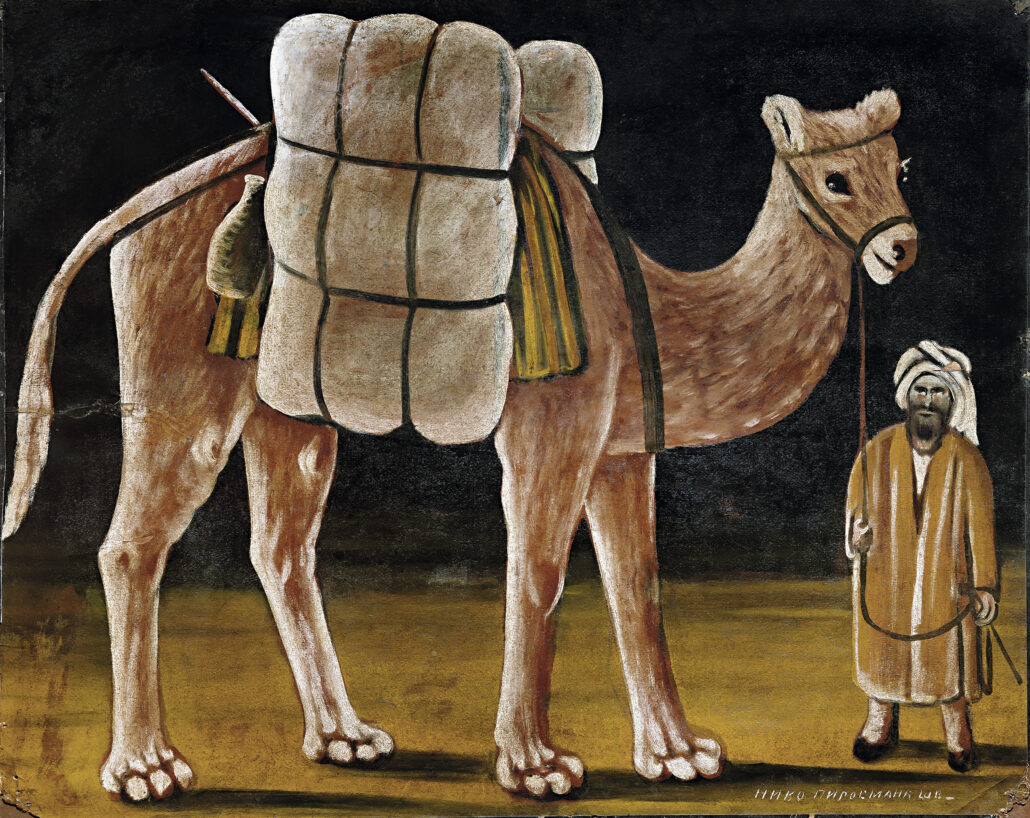
In the summer of 1912, in the Tiflis dukhan "Varyag" works Niko Pirosmani (Nikolai Aslanovich Pirosmanishvili, 1866–1918) Futurist artists Mikhail Le-Dantu and brothers Ilya and Kirill Zdanevich saw it. Thus began the story of the discovery of an original master, a self-taught artist, Pirosmani, who often painted store signs, portraits, or just paintings on oilcloth with homemade paints for “a glass of wine and a plate of kharcho.” In 1913, Pirosmani’s works made a splash at the Moscow avant-garde exhibition “Target”, organized by Mikhail Larionov. Pirosmani’s personal exhibition was held in 1927 in Tiflis, and in 1930 in Leningrad and Moscow. After visiting this exhibition, Kazimir Malevich wrote to Nikolai Punin: “So, Pirosmanashvili for me personally is a great and acute phenomenon <...> The sign masters gave us the opportunity to enter Cubism, they moved us from an academic point of view.” One of the artist’s early works, “Portrait of a Railwayman (Misha Metekheli),” which Igor Sanovich received from the collection of Kirill Zdanevich, was probably created in the 1890s, when Pirosmani worked on the railway as a brake conductor of freight cars and painted on orders from his colleagues. their portraits. “A Camel Driver” before entering the Sanovich collection belonged to the writer, editor-in-chief of the magazine “Friendship of Peoples” Viktor Goltsev, a specialist in Georgian literature, who jokingly called himself “a Georgian of the Moscow spill” and “Vitya in the skin of a tiger.” After Goltsev's death in 1955, Igor Sanovich bought another Pirosmani. The collector recalled this acquisition in the following way: “All my artist friends already knew that Pirosmani for me is God. And then Volodya Weisberg comes to me and says: “Get your money ready, we’ve found Pirosmani for you.” Well, of course, I don’t have money. I borrow money from Costakis for any period of time - “whatever you say, I pay it back right away.” He lent me money, I go and buy this camel. And this camel is the first painting by Pirosmani, which was published in the USSR, in the Great Soviet Encyclopedia. Pirosmani - and this is the picture.”
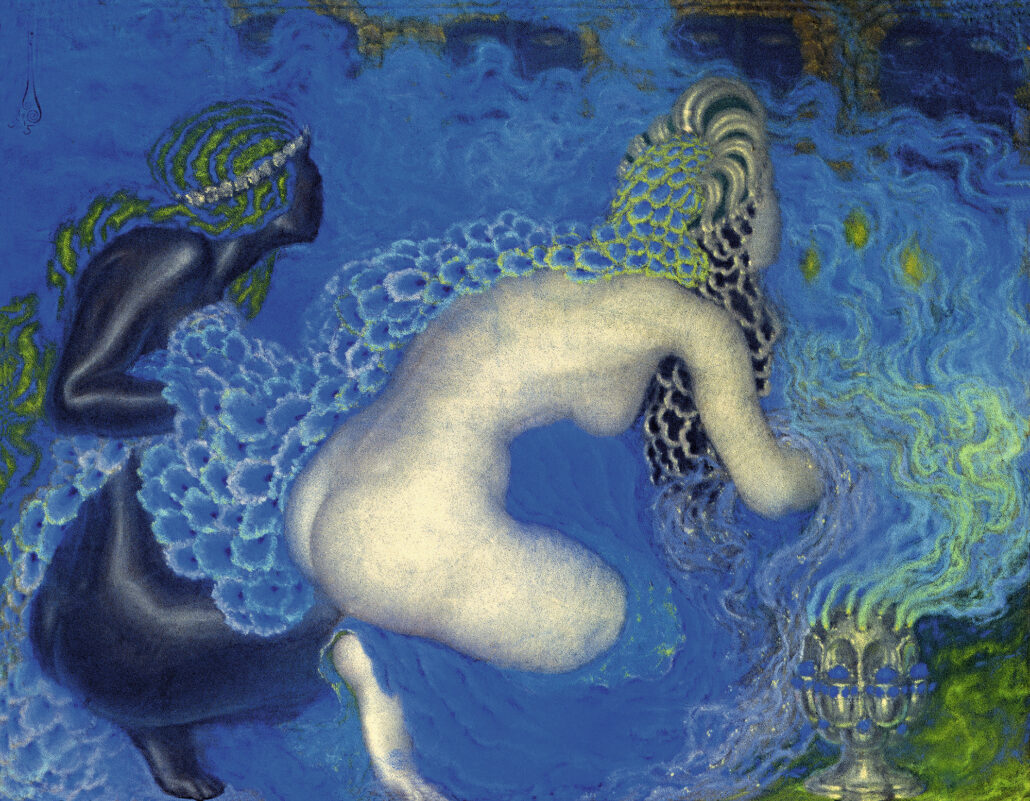
Name of decadent and dandy Nikolai Konstantinovich Kalmakov (1873-1955) - a painter, sculptor, illustrator and theater artist - remained in the shadows for a long time, and the story of his life was full of mysteries and legends. It is still unknown exactly from whom Kalmakov, who graduated from the Imperial School of Law in St. Petersburg in 1895, studied painting and drawing. Having met Nikolai Evreinov, a reformer of the Russian theater, Kalmakov entered artistic circles and designed several performances, including the legendary “Salome” based on the play by Oscar Wilde. Kalmakov, called the “Russian Beardsley” for his subtlety of drawing and eroticism, gave preference to mythical and surreal subjects and characters, creating, according to Evreinov’s definition, “grotesque, bestial, flickering, sensual” art. At the same time, carefully executed symbolic works make Kalmakov’s art similar to the European styles of Art Nouveau and Art Deco, the works of Lev Bakst and Gustav Klimt. Oriental and exotic motifs, German romanticism and mysticism - Kalmakov manages to synthesize all this in graphic and painting works shown at exhibitions of the World of Art, the Union of Russian Artists, the Moscow Association of Artists and many others.
Actor Alexander Mgebrov, who worked at the Vera Komissarzhevskaya Theater and the Ancient Theater of Nikolai Evreinov, recalled: “Kalmakov was generally a very original person and a very special artist.” The tempera “Incense” by Kalmakov entered the collection of Nikolai Timofeev from the collection of Alexander Burtsev, one of the largest bibliophiles and collectors of paintings in St. Petersburg-Petrograd.
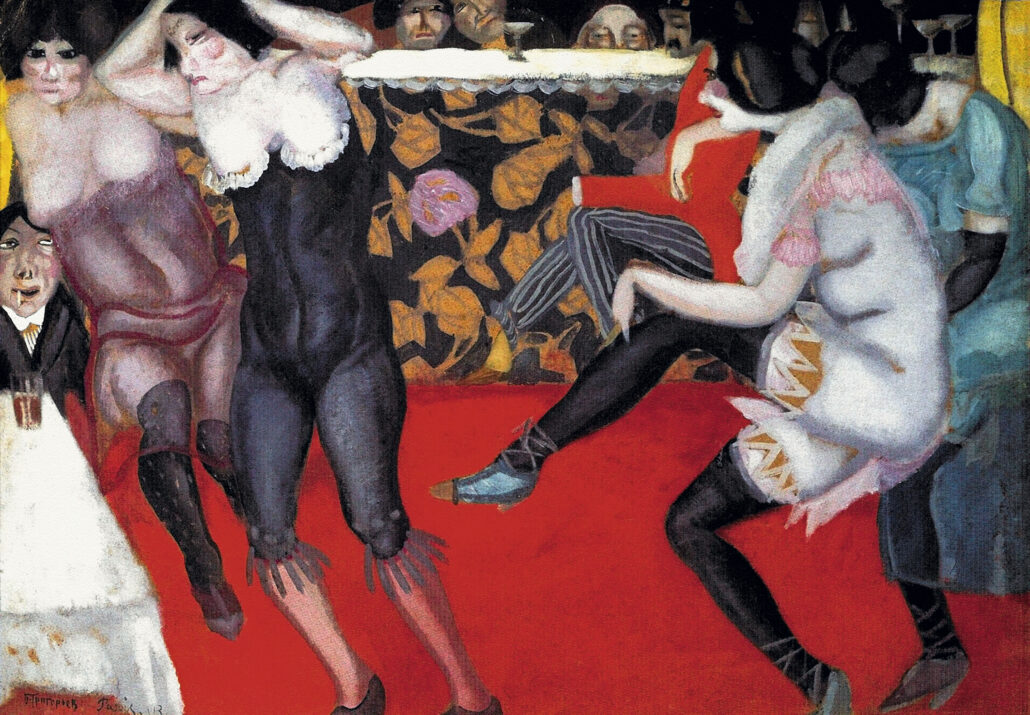
Illegitimate son of a Swedish subject and a Russian tradesman, Boris Dmitrievich Grigoriev (1886–1939) studied at Moscow Stroganovka and was a volunteer student at the St. Petersburg Academy of Arts. A first-class draftsman, one of the best portrait painters of the era, Grigoriev, without abandoning life-like resemblance, introduced satire and grotesque into his works. In Paris in 1913, Grigoriev attended the Grand Chaumière Academy and later created the entire cycle “Intimité,” which was published as a separate edition and shown at the Moscow and Petrograd World of Art exhibitions. The artist's Parisian works - zoos and circuses, booths and cabarets, cafes and restaurants, night carnivals - are done in an original manner, while referring to the plastic arts of James Ensor and Henri de Toulouse-Lautrec.
Returning to Russia, the artist designed ethnographic publications (“The Life of the Russian People, Their Morals and Customs in Paintings by Russian Artists and in Photographs from Life,” 1914), portraits Chaliapin and Meyerhold, and created the series “Race” and “Faces of Russia.” “I only love Russia,” Grigoriev admitted. “I hate her for the people, for the climate, for the animal nature.”
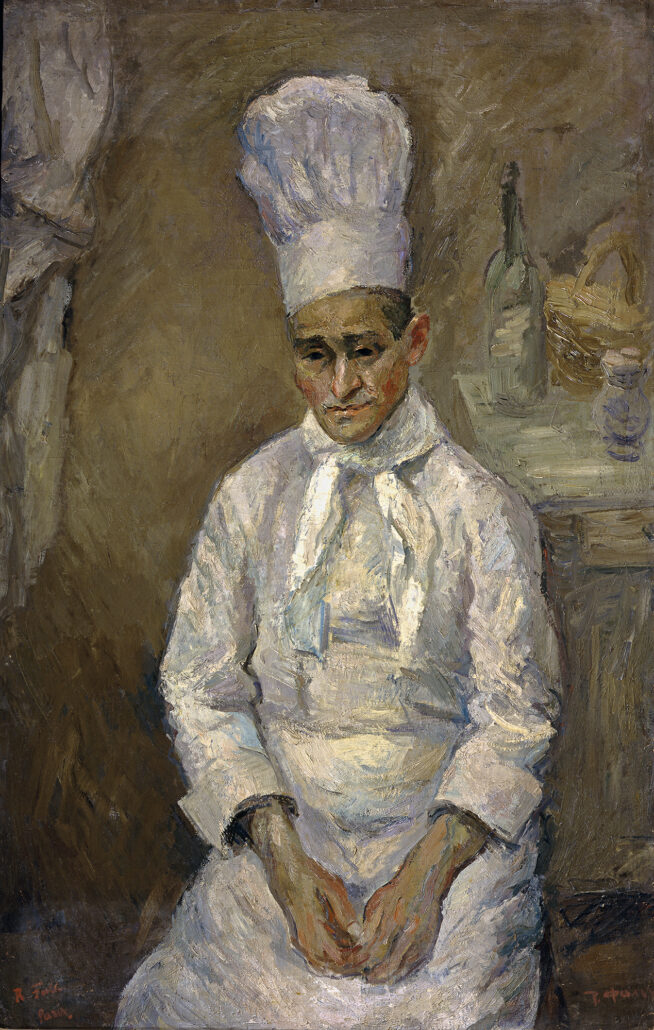
Robert Falk I didn’t like the word “portrait” because of its formality. “I love writing people!” - said the artist. His wife, Angelina Shchekin-Krotova, noted that during the sessions he always talked with his models, trying to get to know the person better: “Falk treated Cézanne with the greatest respect, to some extent followed his pictorial system, but never considered how master from Aix, that a person should pose “like an apple,” wordless and motionless.” During the Parisian period, 1928–1937, Falk continued to paint portraits. He moves away from the cubization of forms of the “Jack of Diamonds” period and seeks inspiration in the painting of old masters, primarily Rembrandt.
Shchekin-Krotova relays Falk's story about the creation of the portrait of the cook. “Once I painted a cityscape: a street in the working quarter of Paris, not in the new, but in the old, where there are still old, old buildings, dirty walls, chipped sidewalks. You know, I loved this kind of Paris. <…> One day, when I was working on such a street, suddenly a sudden heavy slanting rain came. <…> I picked up the canvas, sketchbook, easel and looked around - where could I hide, wait it out? <…> And then I see a sign nearby, a restaurant or cafe. I came closer - a strange sign, one word “Borchtch”. And suddenly I realized - this is borscht! Apparently, the signature dish of the owner, a Russian emigrant. Has entered. The room is small, behind the cash register there is a typical French woman, smart and curled. There are almost no people, that is, the eating public. Two pretty girls, smiling and agile, serve. I dumped my utensils in a corner and, sitting close to the kitchen door, from where the appetizing smell of real borscht was wafting, shouted in impatience: “Donnez moi, s'il vous plait, un borchtch!” - of course, with a real Russian accent. Suddenly the door from the kitchen opened and a man ran out, all in white, in this luxurious cap, and rushed towards me: “Dear, Russian?” Almost hugged me, almost cried with joy. He ordered me to quickly serve a whole bowl of borscht and a bunch of bread <...>, and sat down at my table. We talked. And he told me his story - how he ended up in Paris. He himself is from the Don. He served in the army and was an orderly for a master officer. And then the civil war began, then the offensive of the Red Army. Novorossiysk. In general, everything, as it was beautifully described by Bulgakov, should not be repeated. He followed his master, he was still young, and he assured him that soon “all this mess will end, we’ll return home, the Entente will help.” <…> He met a good girl here, her father was the owner of a restaurant, and now he himself has inherited the business. It's okay, you can live. The Don borscht was very much to the taste of the French. <…> “I haven’t known anything about my people since I ran overseas. Yes, and I’ve taken root here, so I already have children, daughters, completely French, not a word in Russian, they just call them “father”, not dad, I forbade them. Well, I got pretty good at it here. My master officer used to teach me something out of boredom!..” He told me about his village, all in gardens, about the steppes that bloom and turn green in the spring like nowhere else. <…> I couldn’t stop, I remembered everything. It had already started to rain, but he wouldn’t let me go, wouldn’t take my money, and went to see me off. And when the next day I came to finish my sketch, he looked at me and invited me to eat again. I invited him to pose. At first I just wanted to make a sketch and give it to him; After all, it would take a long time to pose for a portrait; I would take him away from his work, but he happily agreed: he had found an audience. And he kept sitting in front of me in this position, sometimes crying, and for some reason singing his Cossack songs in a high, high voice, almost in falsetto. He said: “The income is not bad. And so - why did this Paris surrender to me? Even if it’s not me, my portrait will go home.”
Gallery of Russian Art Nouveau and Avant-Garde Collectors
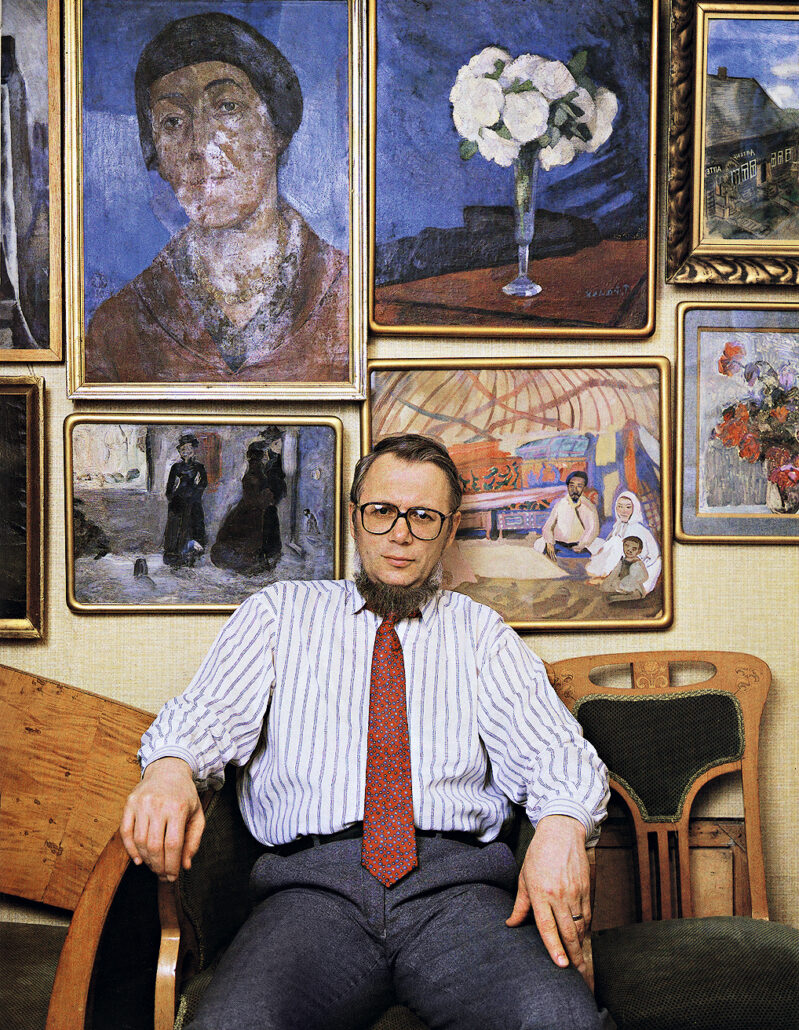
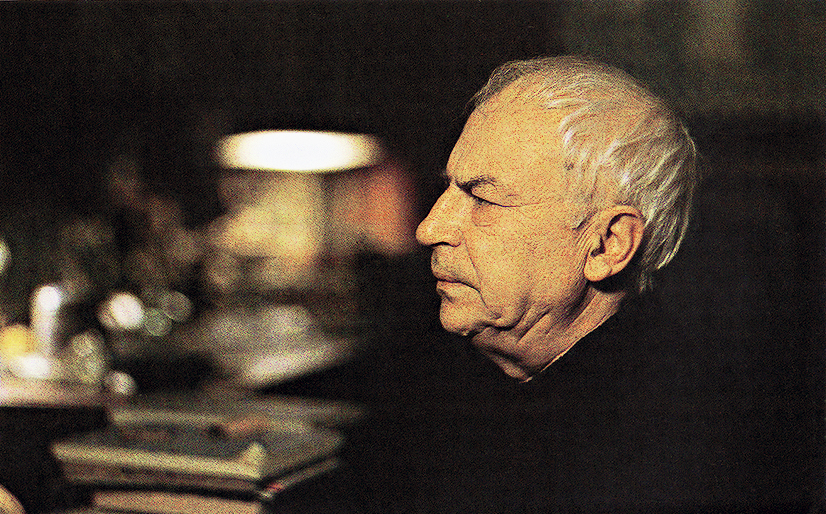





Materials provided by the press service of the Museum of Russian Impressionism.
Museum website http://www.rusimp.su/


